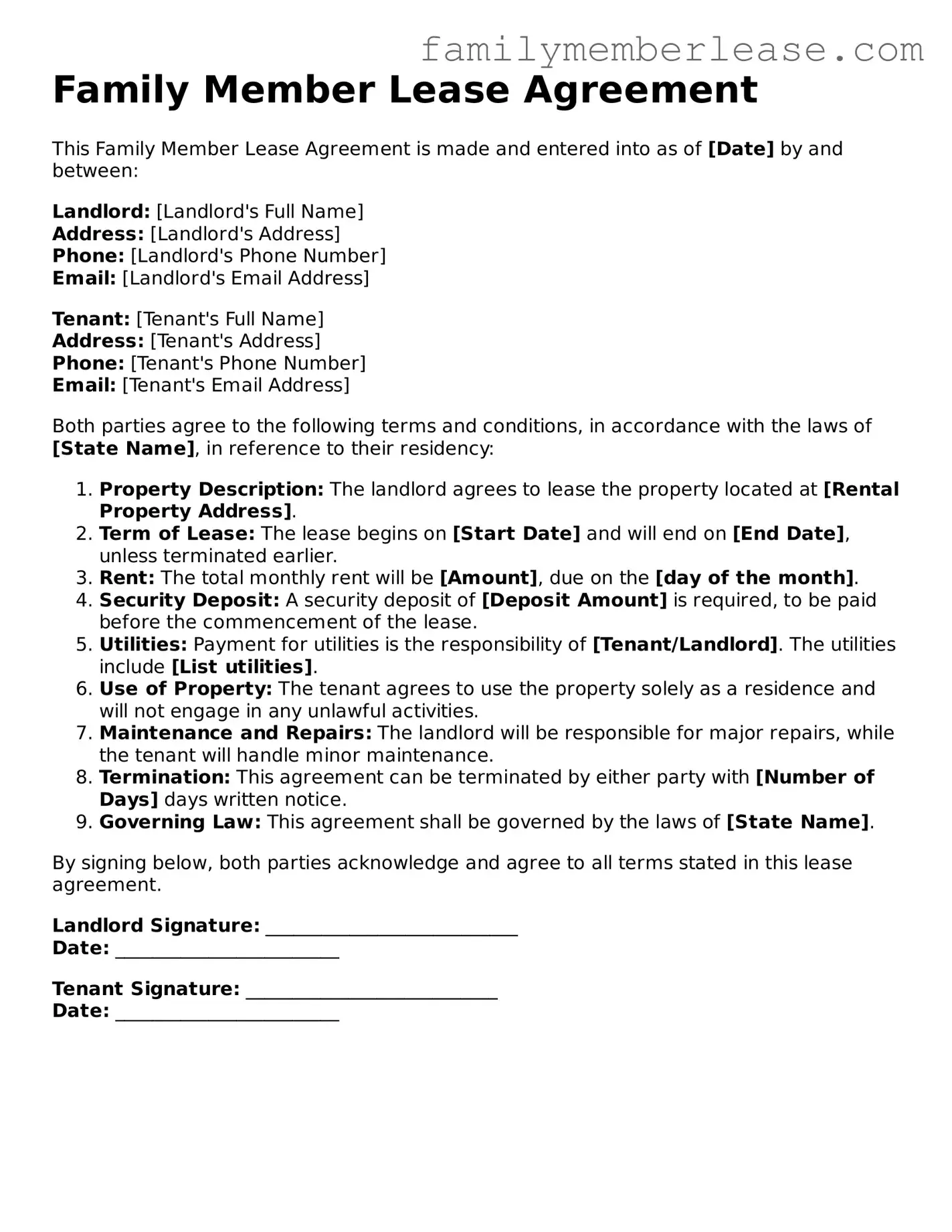The Family Member Lease Agreement form serves as an essential tool for families looking to formalize rental arrangements among relatives. This document outlines the terms of the lease, including the rental amount, duration of the agreement, and specific responsibilities of both the landlord and tenant. By clearly defining expectations, the form helps prevent misunderstandings and fosters a harmonious living environment. It typically includes provisions related to maintenance, utilities, and rules regarding the use of shared spaces. Importantly, the agreement can also address issues such as security deposits and the process for terminating the lease. Overall, this form is designed to protect both parties and ensure that the rental relationship operates smoothly, allowing family members to live together while maintaining respect for each other's rights and responsibilities.
